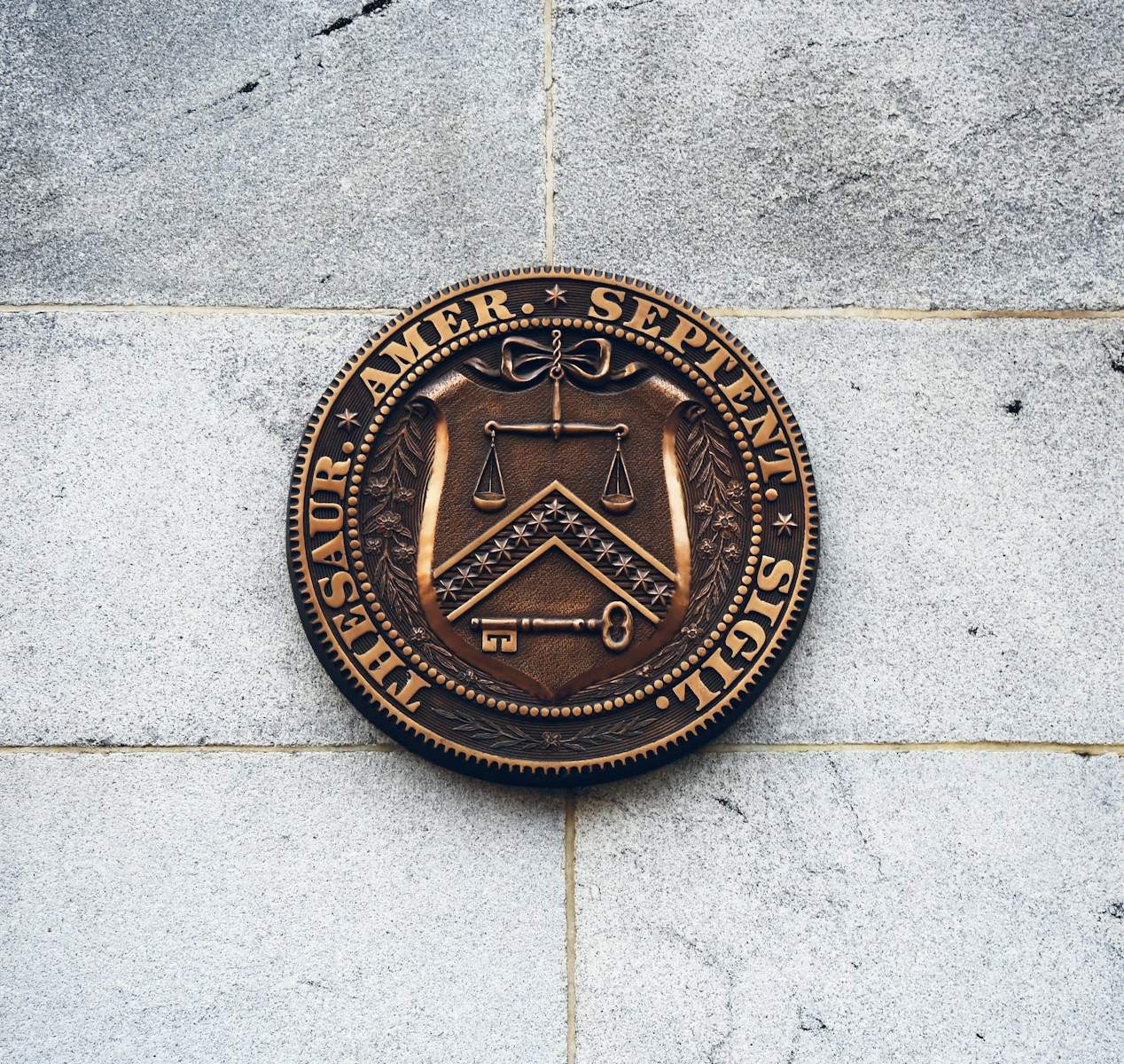Unexpected Check From United States Treasury? Latest Treasury Scams

The phrase “treasury check” might not raise alarms for most, but it should. Government-issued checks often include identifiable markers, and any checks lacking this designation could be fraudulent.
It is crucial to check the sender’s address on any government-issued check, as verifying the address helps confirm the authenticity of the payment and ensures it is from an official source.
Check fraud continues to be a risky payment type, ready to exploit the trust we place in government-issued payments. This post uncovers the cunning tactics of treasury check scams, equipping you with the insight needed to protect your hard-earned money in this complex economic landscape.
The Persistent Threat of Check Fraud
Despite the digital age, check fraud remains a significant issue, adapting to new technologies and economic conditions. In 2023, global losses due to fraud scams amounted to $486 billion, with check fraud alone resulting in $21 billion in losses in the Americas. This underscores the ongoing challenge financial institutions face in combating traditional and digital fraud schemes. US Treasury scams are one place where check fraud remains an issue as fraudsters take advantage of the trust Americans have in their government and the federal payments system.
New Economic Relief Efforts: Be Proactive
In 2024, the passing of the Tax Relief for American Families and Workers Act marked a significant step in providing continued support across various sectors. This act includes enhancements to the Child Tax Credit, offering business breaks, disaster tax relief, and measures aimed at improving affordable housing. Such legislative efforts demonstrate the government’s commitment to economic stability and growth.
However, we have learned from previous relief acts that scammers will use this as an opportunity to target a new and vulnerable point in the financial aid system. Financial institutions and individuals must remain vigilant against evolving fraud tactics as they relate to the Tax Relief for American Families and Workers Act.
Top US Treasury Scams
As a refresher and a reminder, here are some of the most common US Treasury Scams. This is not an exhaustive list, as fraudsters are always finding the edges and new paths to exploit any financial system.
Fake Treasury Check Scams
This scam involves the fraudulent use of checks that appear to be issued by the U.S. Treasury. Scammers send counterfeit checks to individuals, claiming that the recipients are entitled to receive a government grant, tax refund check, or other payments from the Treasury. The check might look legitimate, complete with watermarks and official seals. However, legitimate U.S. Treasury checks should have specific security markings, including a treasury seal that reacts to water, indicating its authenticity. Victims are often instructed to deposit the check and then wire a portion of the funds back to cover taxes, processing fees, or other fabricated expenses. Once the bank discovers the check is fake, the victim is held responsible for the entire amount.

Tax Refund Fraud
In this scam, fraudsters use stolen personal information to file fraudulent tax returns in someone else’s name, directing the refund to an account they control. The scammer might send a portion of this refund to the victim via a fake Treasury check, asking them to forward a part of it under some pretext, leaving the victim liable when the fraud is discovered.
For assistance with resolving issues related to fraudulent tax refunds, individuals can contact the fiscal service call center.
Grant Scams
Scammers contact potential victims, claiming they’ve been selected to receive a government grant from the U.S. Treasury for personal expenses, business support, or disaster relief.
To receive the grant, victims are told they must first pay a processing or delivery fee, often asked to be paid via wire transfer, gift cards, or by depositing a fake Treasury check and sending a portion of it back to the scammer.
Small Business Administration (SBA) loan scams
Government officials alerted the public about potential fraud schemes related to economic stimulus programs provided by the SBA to assist small business owners during the COVID-19 pandemic. The government agency advised everyone to watch out for phishing emails or other scams related to economic relief programs;

Fake Social Security number requests
According to the AARP, the Social Security Administration receives hundreds of thousands of complaints each year of scammers asking for SSNs.
Cash advances
Some lenders offered an advance on relief money, refund money, or other treasury related funds.
The scam occurs because payment recipients pay a high interest rate which can add up quickly, costing them more than it is worth.
Quick Fraud Prevention Tips for Everyone
-
Verify Before Acting: Contact the U.S. Treasury or the agency purportedly issuing any check directly through official channels to verify the check’s authenticity.
-
Understand Treasury Checks: Familiarize yourself and your FI staff members with the security features of legitimate U.S. Treasury checks to identify fakes.
-
Never Wire Money: Legitimate government agencies will never ask you to wire money or pay fees to receive grants or refunds. Ensure your wire transfer team understands and validates all wire transfer requests.
-
Report Suspected Fraud: If you suspect a scam, report it to the Treasury Inspector General for Tax Administration (TIGTA), the Federal Trade Commission (FTC), or the U.S. Postal Inspection Service.
-
Enroll in Direct Deposit: Enroll in direct deposit for secure and convenient payment methods. This helps prevent issues related to lost or stolen federal payments. Contact the appropriate agency for assistance in setting up direct deposit for federal benefits.

How Financial Institutions Can Fight Treasury Check Fraud
Here are some recommendations to help FIs stay vigilant and prevent US Treasury check fraud in 2024 and beyond.
Strong Verification Processes
In the battle against fraudulent U.S. Treasury check scams, the implementation of robust verification processes is indispensable. FIs should train their tellers and back office staff in recognizing the security features inherent in authentic U.S. Treasury checks. This training should cover the identification of watermarks, ultraviolet overprinting, microprinting, and the use of Treasury check verification systems to ascertain a check’s legitimacy prior to its processing.
Download the Guide to Treasury Checks
Account Holder Education
Educating bank account holders about the dangers associated with counterfeit U.S. Treasury checks is a proactive step. It is crucial for FIs to issue clear guidelines on the issuance of legitimate Treasury checks, especially concerning tax refunds, grants, or disaster relief payments. Additionally, having a savings account is important for securely receiving payments electronically, ensuring safety and convenience.
Raising awareness among account holders about the warning signs of unsolicited checks and the proper verification protocols can significantly diminish the risk of fraud.
Reporting and Response Protocols
Establishing straightforward protocols for the internal reporting of suspected fake Treasury Check scams, as well as making reports to external authorities, is critical.
Collaborative Work
Engaging in collaborative efforts with law enforcement, regulatory agencies, and other financial institutions is vital in addressing fake U.S. Treasury check scams. Sharing information on scam tactics and fraud trends can bolster the security of the financial system. Participation in industry forums, consortiums, and networks offers valuable insights into preventive measures and alerts to emerging threats.
Invest in Fraud Detection Software
Leveraging anti-fraud technologies with built-in Treasury Check features like TrueChecks enables FIs to more confidently spot potentially fake checks on a real-time basis.
At AFS, our bank and credit union customers, process thousands of Treasury items per month, identifying fraud in real-time and preventing losses along the way.
This has been made possible following new enhancements to TrueChecks® – the industry’s leading check fraud database and comprehensive check fraud prevention solution – including a direct link to the U.S. Department of the Treasury database, giving financial institutions the ability to validate Treasury items in real time or in batch, across their deposit channels.
For more read Guide to Treasury Check Validation, to learn how financial institutions can easily validate Treasury items.
What Should I Do If I Receive an Unexpected Check from United States Treasury?
Receiving an unexpected U.S. Treasury check can be surprising. It’s important to verify its authenticity before taking any further action. Contact the issuing agency directly through official channels to confirm the check’s legitimacy. Never wire money or pay fees to claim a check, and report any suspicions of fraud to the appropriate authorities.
How Can I Identify a Fraudulent Communication from the Internal Revenue Service?
Fraudulent communications pretending to be from the IRS are a common tactic used by scammers. Genuine IRS communication will never demand immediate payment via wire transfer, gift cards, or by sharing sensitive information over the phone. Always verify the authenticity of the message by contacting the IRS directly through their official website or phone number.
What Is the Role of the Fiscal Service in Preventing Treasury Check Fraud?
The U.S. Department of the Treasury’s Bureau of the Fiscal Service plays a crucial role in combating treasury check fraud. They implement measures to secure the printing and issuance of checks and work closely with financial institutions to educate them on recognizing fraudulent checks. Understanding their role can help you appreciate the complexity of fraud prevention efforts.
How Can I Verify the Authenticity of Treasury Checks?
To verify the authenticity of a Treasury check, familiarize yourself with its security features, such as watermarks, ultraviolet overprinting, and microprinting. If you’re uncertain about a check’s legitimacy, use the U.S. Treasury’s check verification system or contact the issuing agency directly. Financial institutions can also be a valuable resource in helping to confirm the validity of Treasury checks.
